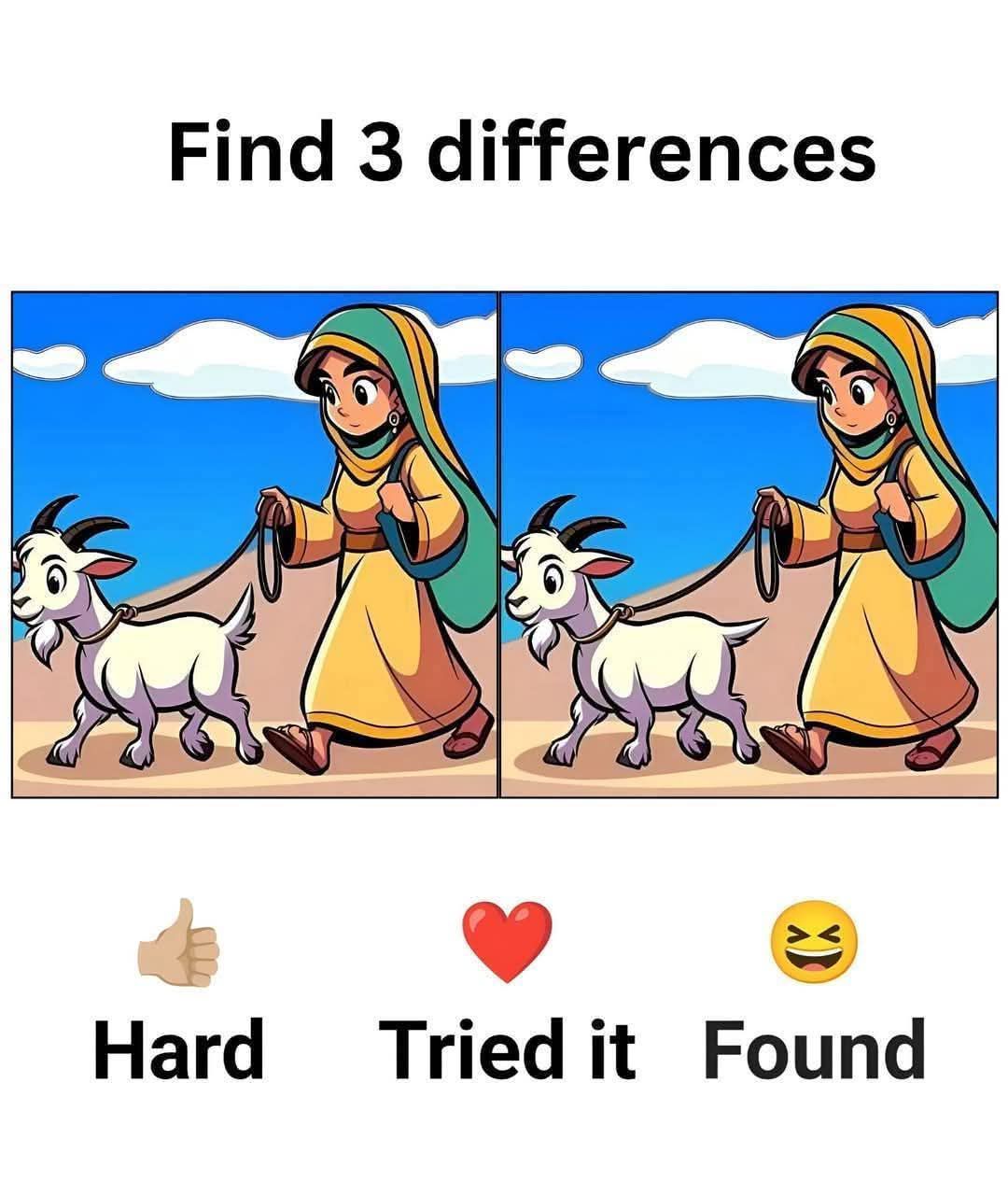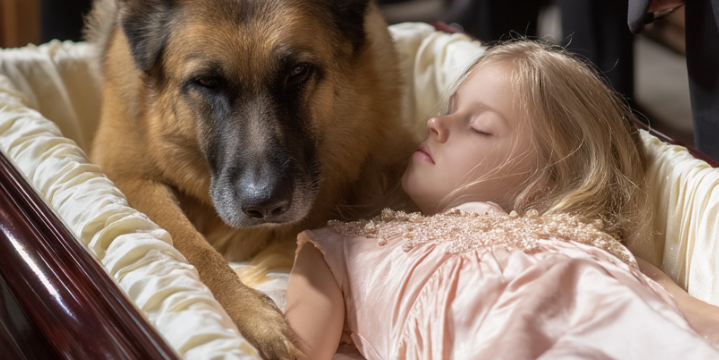Do you pride yourself on having a keen eye for detail? If so, here’s a playful yet surprisingly challenging way to put your observation skills to the test. The image in question presents two side-by-side illustrations of a girl walking a goat. At first glance, both pictures seem identical, almost like perfect mirror images.

But a closer inspection reveals that they’re not the same at all. Hidden within the two images are three subtle differences that only the most attentive viewers will spot quickly. Your task is simple but not necessarily easy: can you find all three differences in under 30 seconds? You can take your time if you prefer, but if you’re up for a real challenge, set a timer and race against the clock. Not only is this a fun mental game, but it also gives your brain a mini workout. These spot-the-difference puzzles are more than just entertainment. They train your brain to notice visual inconsistencies, enhance your focus, and improve your ability to spot small changes quickly.
You might think that finding three small differences between two nearly identical images would be a piece of cake, but don’t be fooled—our eyes and brains can easily miss what’s right in front of us. Why is that? The answer lies in how the brain processes visual information. Rather than analyzing every detail, our brain takes shortcuts. It recognizes familiar shapes and patterns and fills in the blanks, allowing us to move through the world more efficiently. This is helpful in everyday life but can work against us in puzzles like this. Instead of seeing the differences, we often see what we expect to see. People commonly make a few mistakes when trying to solve puzzles like these. They often focus too heavily on the center of the image and ignore the edges.
Others glance too quickly, assuming they’ve caught all the changes without truly analyzing the picture. Sometimes, similar features are mistakenly grouped as being the same because they’re “close enough.” All these habits cause us to overlook changes, which makes this challenge more difficult than it initially appears. Now, if you’ve taken a few minutes to analyze the images and you’re ready to see how you did, let’s break down the three differences. First, take a look at the girl’s headband. In the left image, it’s a solid color—simple and unremarkable. But in the right image, you’ll notice that the headband now features a striped pattern. It’s a subtle change, and because our brains tend not to focus on accessories like headbands, it’s easy to miss.
The second difference is in the goat’s tail. In the left picture, the tail is fluffy and curls upward in a natural arc. In the right image, the tail looks shorter and points downward. It blends in with the goat’s leg, making it an easy detail to overlook unless you’re scanning carefully. The final change is located at the bottom of the picture—the girl’s back foot. In the left image, her shoe is fully enclosed and looks like a regular sneaker. In the right image, however, her heel is exposed, making the shoe look more like a sandal or open-backed slipper. This difference is located in a part of the image that most people don’t focus on until the very end, making it a clever spot to place a tricky change. So, how did you do? Did you find all three differences without help? If you did—great job! That means your attention to detail is sharp and your visual processing is strong. If you only found one or two, don’t be discouraged. These puzzles are designed to challenge you, and each one you try helps improve your focus and patience. Spot-the-difference puzzles are more than just casual fun. They’re useful tools for improving everyday skills like proofreading, visual memory, and attention to detail. Whether you’re spotting typos in a document, remembering where you left your phone, or noticing body language cues in a conversation, these games have real-life benefits. So the next time you come across one of these challenges, don’t scroll past—give it a shot.

Share it with friends and family, see who spots the differences first, and enjoy the satisfaction that comes from solving something tricky. Just to recap, here are the three differences: the girl’s headband changes from solid to striped, the goat’s tail goes from up to down, and the girl’s back shoe switches from a closed sneaker to an open sandal. Three small changes—one big test for your brain. Keep playing, stay sharp, and enjoy the next challenge that comes your way.





